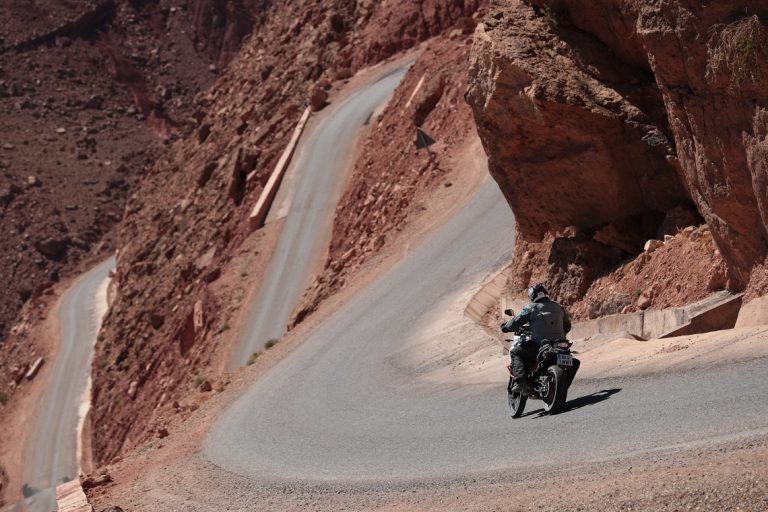Paul Spreadbury from pit-stop training takes cornering back to basics and explains how to corner with accuracy and fluidity
Cornering on your bike with accuracy and fluidity takes practice and concentration to perfect. Failure to get it right can lead you off the right path, so it’s important to know how to nail things properly.
As you enter the bend you need to be prepared and ready. On approach, you need to look at all the information, think about what is going on around you, check your mirrors, predict the movements of the other road users, as well as the road ahead. Chevron boards show ‘sharp deviation’, while hedges or trees give an indication of the sharpness of the bend.
Take the correct path. If the bend is left to right then you need to take position one and follow the path around. If it’s a right-to-left bend then you need position three. However, if there is a large goods/heavy goods vehicle coming in the opposite direction you may be inclined to move into position two for safety.
Entering at the right speed, you want to go in slow and out fast, so you need to scrub off some speed prior to entering the bend and you certainly do not want to apply the brakes on the bend. Select a flexible gear. By this, I mean if you were to decelerate the engine braking would kick in, or if you need to accelerate the bike would respond immediately.
I find that third gear can be mostly satisfactory, but it all depends on the surface type and the sharpness of the bend itself.
You want to look ahead as far as possible looking for the ‘limit point’, which is the point at which the inner and outer side of the corner seems to come together. If the limit point stays the same continue at the speed. If the view starts to open up then you can accelerate out of the bend.
If the point moves closer then the corner will get tighter, this is where the throttle needs to be shut off, and if in a flexible gear the engine braking will cut in, preventing you from needing the brake.
If you do need to use a brake then the rear should be preferable. Refrain from using the front brake, unless in an emergency. Using the front brake places more emphasis on the front tyre, and you are then requiring the tyre to turn and slow down. Preferably you only want it to do one or the other, or you will compromise the grip on the road.
When cornering, you need to counter-steer, pushing down on the left handlebar to go left and down on the right handlebar to go right. If you require more lean on the bike to get round the bend then you can push down on the left footpeg with your foot to go left or the right footpeg to bend right.
If you require even more lean to get round then you can use your knees. By rolling your right knee left it pushes the tank over, leaning the bike to the left and rolling your left knee over to the left to go left. This method is very effective in leaning around corners.
You could practice by using the bends you know well, entering them in a low gear and seeing how the motorcycle reacts. Pit-Stop Training offers a range of motorcycle training including everything from CBTs to Enhanced Rider Schemes.
Find out more by heading to www.pit-stoptraining.co.uk.

